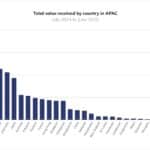( With Citi wide awake for this weekend and in deference to the concept of disasters happening in 'threes', it looks like Derivative King JP Morgan might need more capital than Citi. And if JP Morgan cracks can insolvent Merrill be far behind?- AM)
From financialweek.com
By Hilary Johnson
November 21, 2008 3:56 PM ET
Investors may be punishing Citigroup, but according to one analyst, J.P. Morgan Chase may need even more capital than Citi to shore up its balance sheet.Indeed, Paul Miller at Friedman Billings Ramsey calculates that J.P. Morgan may require at least $188 billion in additional equity capital, compared with $160 billion for Citi.Mr. Miller reckons that J.P. Morgan will need more capital than any of the the other largest banks—Bank of America/Merrill, Citi, Wells Fargo/Wachovia, Goldman Sachs and Morgan Stanley—or financial services giants AIG and GE Financial.Though those companies have about $12 trillion in assets in total, their tangible common equity is just north of $400 billion, or about 3.4% of assets. And since tangible common equity is “the first loss position” when it comes to bad loans, that number is “simply too low,” according to Mr. Miller.Mr. Miller assumes that banks need capital equal to 5% to 6% of risk-weighted assets to cover possible losses. If the underlying capital is financed in the short-term funding market, then banks should set aside at least 10% to 14% more to account for the possibility that short-term money could suddenly become less available.Though J.P. Morgan has more tangible common equity, at $90 billion, compared with Citi’s $35.5 billion, J.P. Morgan also has more risk-weighted assets, at about $1.3 trillion, compared with Citi’s $1.2 trillion.As such, the bank could need at least $127 billion to cover those assets, compared with almost $97 billion for Citi.Overall, the eight financial services companies examined in the FBR research may need between $1 and $1.2 trillion in funds from the government to work their way out of the current imbalance, which developed over a period of years as financial institutions placed too much reliance on short-term funding.
Saturday, November 22, 2008
Subscribe to:
Post Comments (Atom)




No comments:
Post a Comment